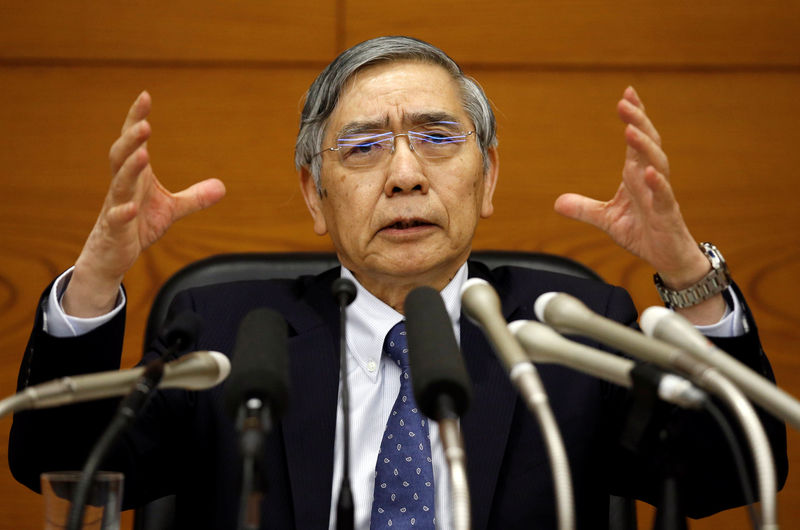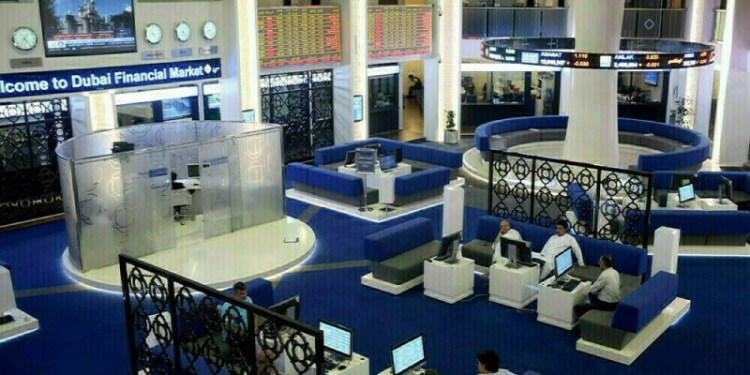 © Reuters. BOJ Governor Kuroda attends a news conference at the BOJ headquarters in Tokyo
© Reuters. BOJ Governor Kuroda attends a news conference at the BOJ headquarters in TokyoBy Leika Kihara
TOKYO (Reuters) – Bank of Japan Governor Haruhiko Kuroda on Wednesday voiced confidence the central bank could engineer a smooth exit from its ultra-loose monetary policy, but said it was too early to debate specifics with inflation still distant from its target.
He also said the BOJ could learn from how other major central banks, such as the U.S. Federal Reserve, are whittling down stimulus for when it eventually exits easy policy.
“By combining various tools, it’s possible to shrink the BOJ’s balance sheet at an appropriate pace while keeping markets stable,” Kuroda told parliament, when asked by a lawmaker about a BOJ exit strategy.
The remarks came after minutes released earlier on Wednesday showed some BOJ policymakers called for greater scrutiny on the potential drawbacks of massive monetary stimulus and signaled the possibility of a future interest rate hike.
One of Kuroda’s biggest challenges in his second term as governor is to soften investors to the eventuality of an end to crisis-era policy without frightening markets.
The BOJ kept monetary settings unchanged at the meeting and most board members shared the view the bank must “persistently” pursue powerful easing, the minutes showed.
But some members said the central bank must be mindful of the potential side-effects of its policy, such as the damage years of near-zero interest rates is inflicting on financial institutions’ profits, according to the minutes.
“Some members said it was important to continue to monitor and assess the positive impacts and side-effects of the current monetary easing policy, including its effects on Japan’s banking system,” the minutes showed.
One member said the BOJ would need to consider raising its yield target if economic and price conditions continue to improve, according to the minutes, adding that such a step would make the central bank’s policy framework more sustainable.
Another member, however, called for ramping up stimulus given subdued inflation, highlighting the rift within the BOJ’s nine-member board on the future policy direction.
After years of heavy asset buying failed to fire up inflation to its 2 percent target, the BOJ revamped its policy framework in 2016 to one targeting interest rates from the pace of money printing.
With inflation barely above 1 percent, Kuroda has repeatedly said the bank was in no rush to dial back stimulus even as the costs of prolonged easing mount.
He reiterated the stance in parliament on Wednesday, saying that Japan was not at a stage to debate an exit strategy given there was “some distance” to achieving the BOJ’s price goal.
Kuroda said the fact the BOJ has succeeded in keeping yields low was a sign markets still hold trust in Japan’s finances, despite the country’s ballooning public debt.
“If market trust over Japan’s debt is eroded, it will be difficult for us to keep interest rates low with our yield curve control policy,” he added.
Some analysts have criticized that by keeping rates low with heavy money printing, the BOJ was allowing the government to delay efforts to get Japan’s tattered finances in order.
Some BOJ board members are more worried about the cost of easing than others. Hitoshi Suzuki, a former commercial banker, said in February the BOJ could raise rates or slow the purchase of risky assets if the costs of prolonged easing began to outweigh the benefits.
Another board member Goushi Kataoka, however, has called for expanding monetary stimulus, saying it was needed to ensure inflation hits the BOJ’s 2 percent target.
At its most recent policy meeting on Friday, the BOJ held settings but Kuroda signaled his readiness to ramp up stimulus if the economic recovery lost steam, an emphatic pushback against creeping speculation it could tighten the money spigot.
Source: Investing.com





























